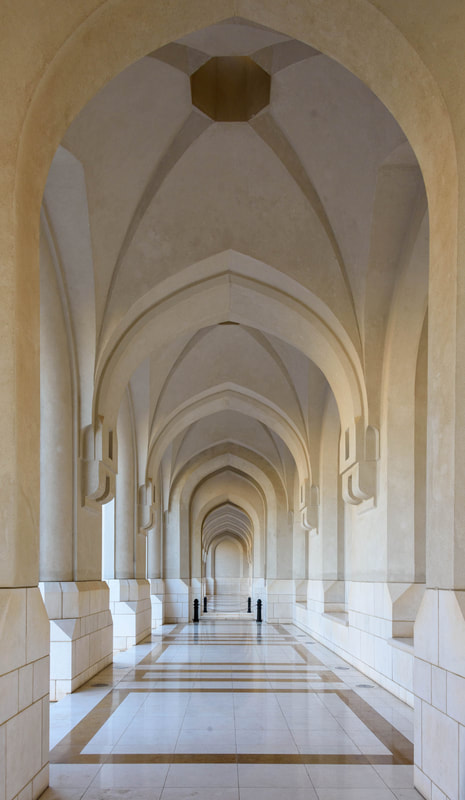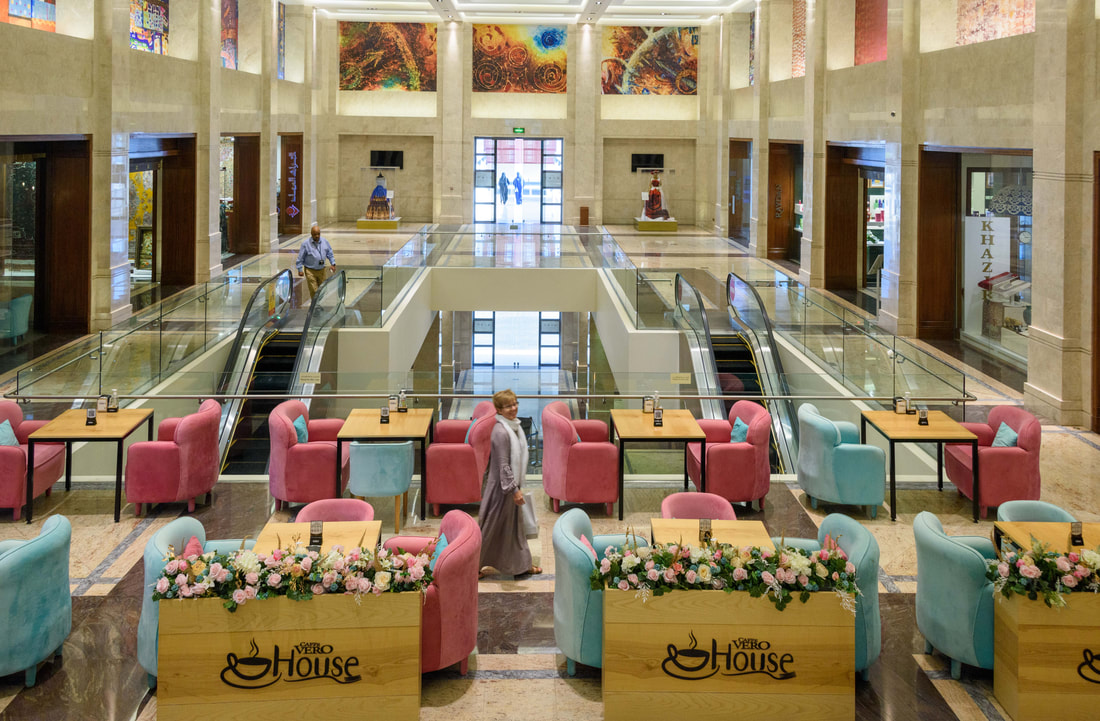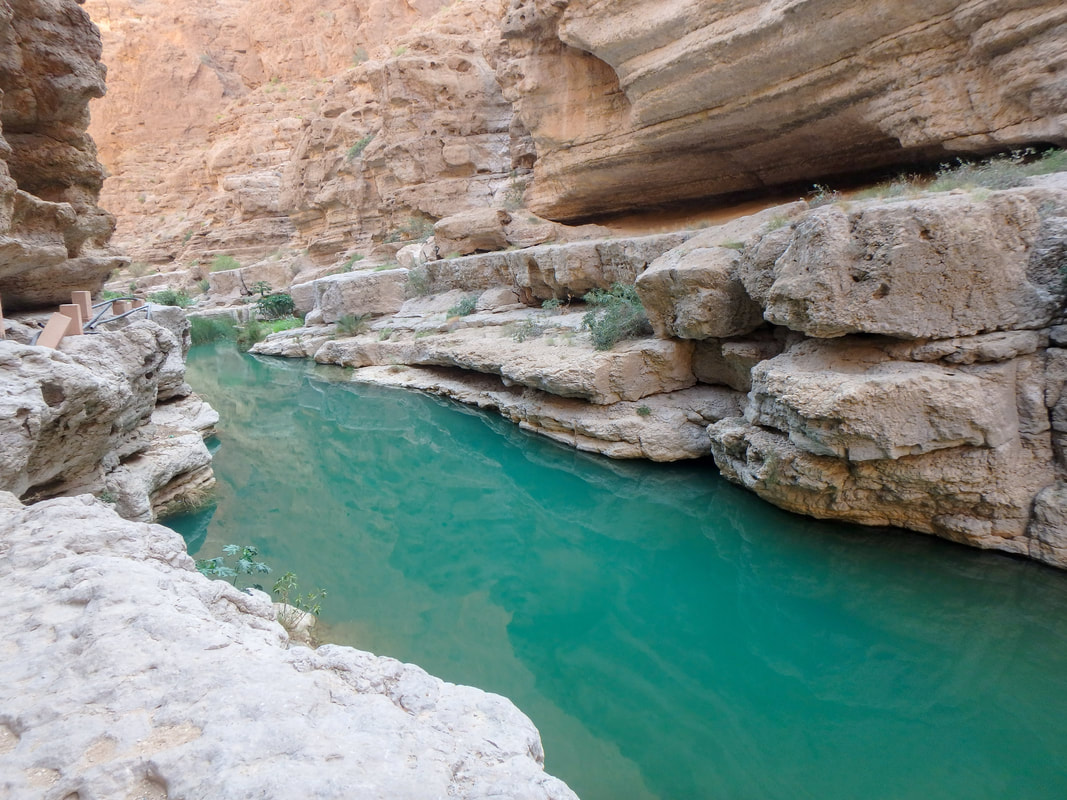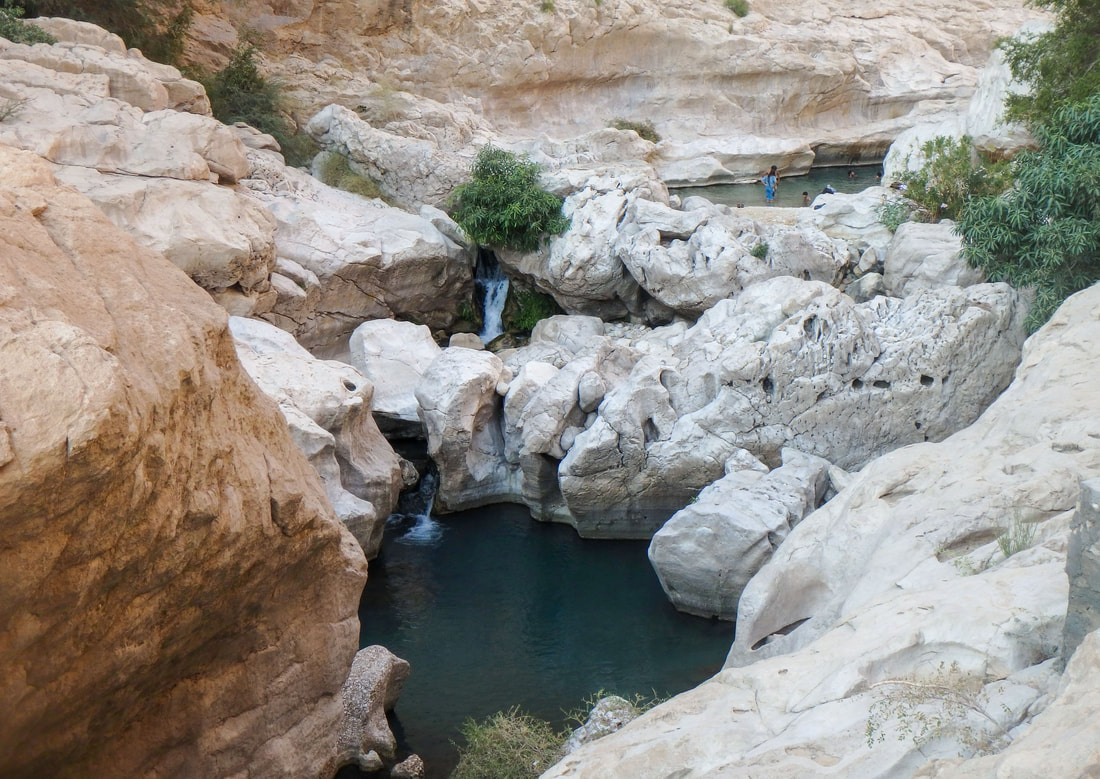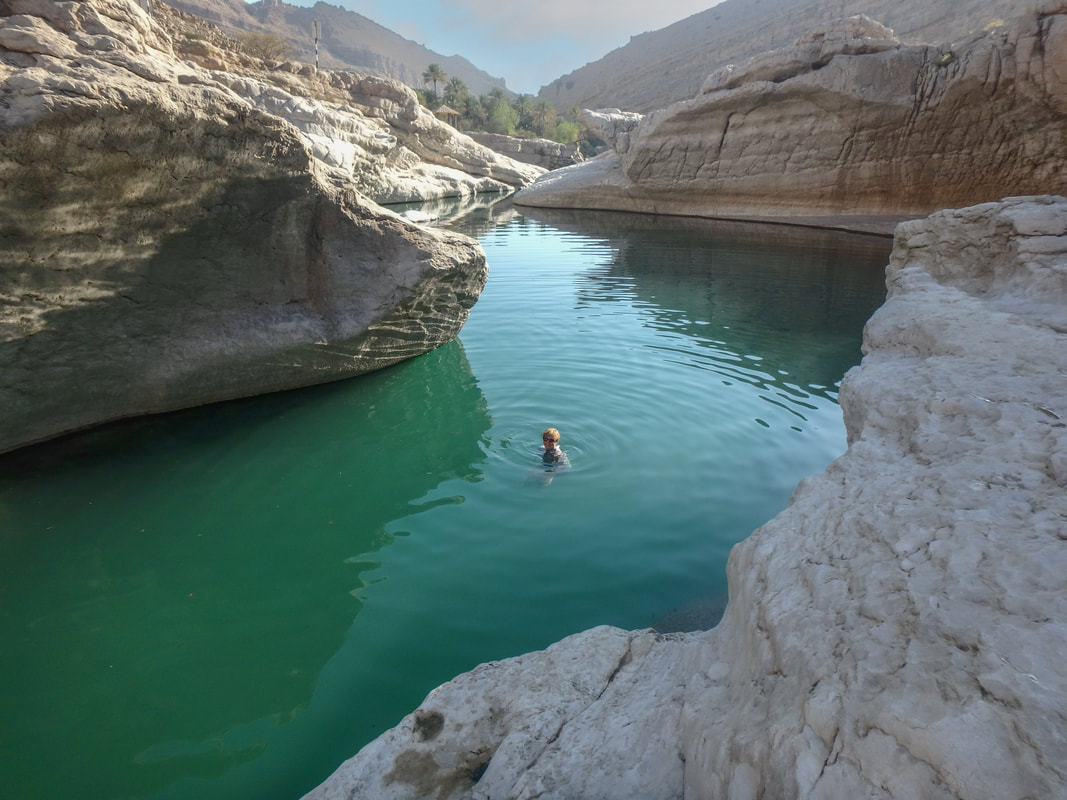
Oman’s oil makes up 84% of the country’s GDP, but its supply is dwindling. In the past 10 years, the country has been on a modernization fast track as it diversifies into tourism, renewable energy and allowing foreign investment and ownership of property. Above: The Al Mouj is a newer area filled with local and expat owned apartments and villas. It oozed cosmopolitan and was touted as “a luxury living and lifestyle community”. The Walk, a pedestrian strip of cafes, restaurants and beauty services, sat in the middle. Judging by the women’s bejeweled abayas and rhinestone encrusted high heels peeking out from below, a stroll here was the place to see and be seen. (Muscat, Oct 23-30/22)

With much of Oman enjoying a coastline, some communities have a corniche. These walking paths are particularly popular for evening strolls and to watch the sunset. We enjoyed Oman's capital city. All the sights required a drive, so we saw much of it. The roads and drivers were good and many of the public buildings were pure white and striking. We joked that it's our primer for going to Dubai.

For quite a while Oman held the distinction of having the largest mosque in the Gulf region, but then Dubai swooped in and built one bigger. Nevertheless Oman’s was impressive. The picture above captures only a portion of this complex with its 5 minarets, (to represent the 5 pillars of Islam). Altogether it can hold up to 8,000 worshippers.

In a moment of happenstance we made friends with Amira (top left) and she was determined to show off her city. After declining several offers, she convinced us to follow her car to the opera house. It ended up being a highlight day. Amira and her bff Ameena gave us the grand tour, talking, giggling and gushing about everything all the while. No money was exchanged, and we agreed that having days like this were a reminder of the similarities we all have rather than the differences that get more attention. Fun Fact: Omani women in post-secondary has doubled in the past decade. Currently 62% of university students are female and they’re leading in medicine and engineering. They make up a large part of the workforce and correspondingly are demanding equal rights in their marriages. While men adjust to this new paradigm the divorce rate rises.

The camels are everywhere and never fail to get our attention. When we saw a camel shepherd on a dirt road, we slowed to keep down the dust. With only a walking stick and kilometres from anywhere he proposed we give him water in exchange for taking pictures of his camels. While he downed it in a single head tilt, we wondered what his backup plan was if we hadn’t happened along.
Once we left the capital it was water and sand for a week. We were smitten as a bulk of pics will attest.
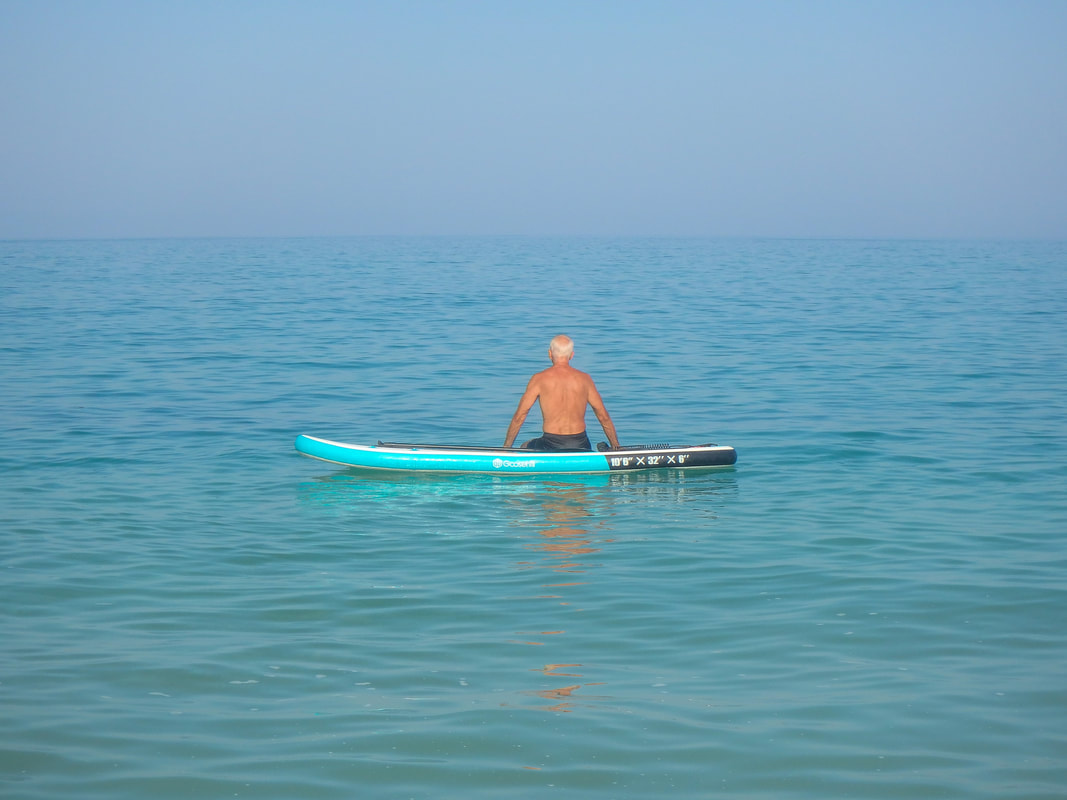
A modest guesthouse by the sea had a SUP and a snorkel. When we weren’t snorkeling, we sat together for ages on that SUP spotting the sea turtles bob up for breath – it was like watching for shooting stars during a meteor shower. Set apart from the small village we only saw the occasional swimmer over the 3 days we spent there. It was a fave! (Tiwi, Oct 30-Nov 1/22)

Wadis are valleys or channels. Most are dry and crisscross the arid landscape until they bloat with dangerous flash floods during the seasonal rains. But a few have water year-round and their gorgeous emerald-green, smooth water-sculpted rocks and borders of lush vegetation make them a draw for both locals and travelers. (Wadi Tiwi, Oct 30/22)

We arrived in the dark to a village where the pavement turned into a sand road. The next day we awoke to realize that this was our morning coffee view. Apart from backyard camels occasionally bleating, the place was as peaceful as it looks. Dunes flank the east and west of the valley floor and cement retaining walls around homes keep sand drifts at bay. (Al Rakah, Nov 2-4/22)

On a travel day we spotted camel racing practices by the side of the road. Jockeys have been banned due to too many injuries so it’s up to the men in the truck to coach the animals along. The tracks extend further than the eye can see, and the length the camels run depends on their age. Younger ones run 4km while the older ones race up to 10km. An adult can run up to a surprising 32-40 km/hr. Annual camel events (including beauty pageants) are spread across the country throughout the year with everyone vying for the grand prizes of Sultan Cups and SUVs. (Nov 5/22)

While we waited alone for the next race Mustafa wandered by and eventually worked up the nerve to ask to have his picture taken with us with his phone. When he saw how good he looked with my phone we repeated the selfies to share with him. It’s amazing what you can communicate with essentially a language of gestures.

We must stand out in these small towns devoid of any tourist draw. We had pulled to the side of a street to find a place to eat and immediately a couple of men drove beside us offering help. As soon as they found out we were from Canada, Zahir told us he studied engineering in St Catherine’s, ON. In a bid to replace its many foreign workers with local talent, the government funds overseas education, including living expenses. We’ve wanted to get a picture of a classic Omani robe (dishdasha) and kuma cap, and Zahir obliged. By far more men wear a dishdasha over western options. They’re a matter of national pride and its look is exacting – a cotton ankle-length robe with a white tassel hanging about 4” from an embroidered, non-collared neckline. Traditionally the tassel is dipped in perfume.

Towns now are dotted with large and often elaborate homes surrounded by walls which denote the property line. Although this one’s windows are ornate, its size and grandeur are surprisingly commonplace. Our guesthouse host (a teacher) explained that Omanis are given a lot to do with as they chose. Some build a house on it and others opt to sell. Many build for the future so that multi-generations can live under one roof.
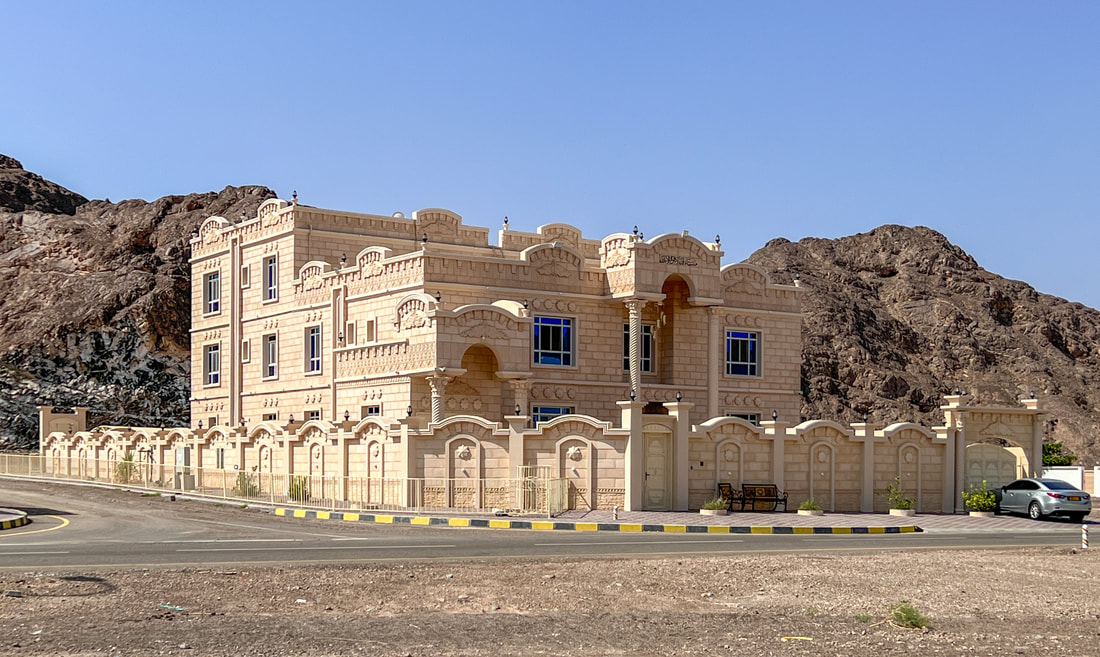
Our 4 year old guidebook refers to a government mandate that buildings must be white or other neutral colours and exceptions require municipal approval. Either there are renegades or rules are laxer in the rural areas, as some homes are inching closer to more vivid colours (nothing bold) and even stone accents.

Our foreign faces continue to attract attention. This morning I dropped off some laundry and through gestures requested cold water and no ironing. By the time I had finished the exchange, 4 guys from the construction site next door had crowded around to watch and participate in the action. (Tanuf, Nov 6/22)

Our favorite rooms were the date storage chambers – they looked like they had been used for centuries. Dark stains on the walls showed that the fruit was once piled up to 4’ high over four large rooms. Crushed under their own weight, they produced a thick honey-like juice that drizzled into the channels below and down to a collection point. In good times the sweet syrup was used for cooking but during battles the boiling hot liquid would be tossed through ‘murder holes’ onto the attackers - an agonizing death to be sure.

A few blocks away from the castle, this mammoth 12th century fort overshadowed the small town. In the past 2 decades these slowly decaying structures started to be appreciated for their historic value. Restoration efforts are keen to stay true to the materials, tools and building styles available during their original construction. (Bahla, Nov 7/22)

Several villages cling to the edge of the local mountains with access limited to only fearless 4x4’ers, which we are not. But a decent road switchbacks up to the village of tiny Misfat. A few locals remain and work the land which gives the area an authenticity, but as farming life is quickly giving way to higher education and life in the city, one wonders how long this rural setting will last. (Misfat, Nov 7/22)

Aside from water sports and dune bashing, experience tourism has been thin, but today we enjoyed the next best thing. This 400yr old house is one of the originals in the village and the grandson gave a top-notch living museum tour of his grandfather’s home. This woman walked us through a number of lessons from grinding wheat and making bread to using a local nut to make oil and perfume. Above, she fire-roasted coffee beans and made a fresh brew. (Al Harma, Nov 8/22)

The rahmani drum is the main instrument in Omani folk music and this man was an enthusiastic player. He made the living museum tour – not jaded by ‘yet another group’, he seemed genuinely happy that we were there to share coffee and dates with him, listen to his drumming and later to see how palm fronds were used to make prayer mats, eating platters, date palm bags, etc.

Another day and another tight drive on roads cut through date palm groves. This one required our side mirrors to be pulled in. On the right side ran a centuries old manmade canal (falaj). Mainly fed by springs, they crisscross Oman with the longest aquifer running under desert sands for 120 km. They pop up into drinking wells and are used extensively as irrigation through plantations. But the ever-drier climate is forcing the country to explore desalination and wastewater reuse. Today, more and more falajs are drying up and projects to install underground water mains were in evidence everywhere we drove.
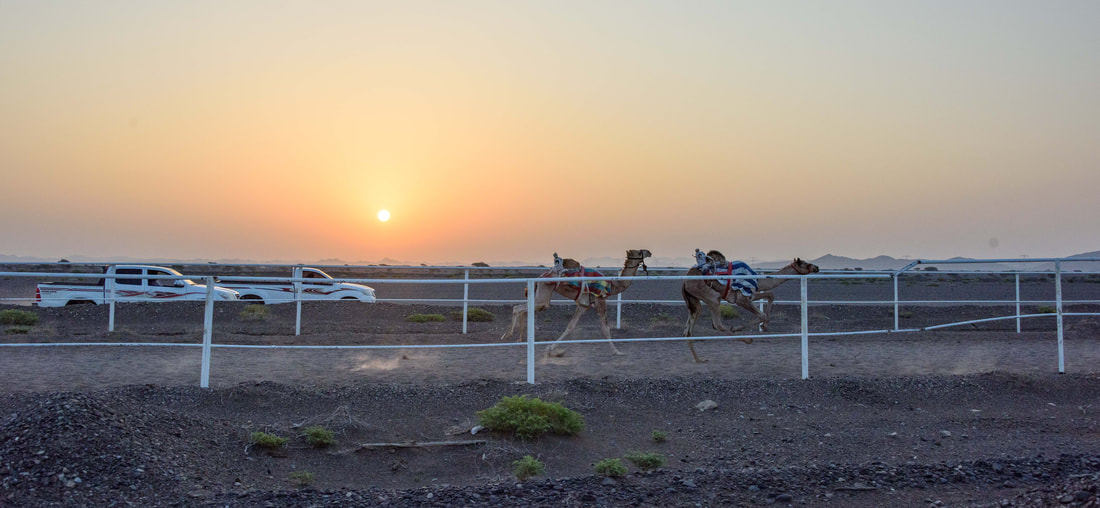
We made a Herculean effort to find a camel racetrack where one of the annual races was to be held. They aren’t advertised and seem to attract only the owners and their entourage. Zahir spent hours tapping friends and those in the know to find us a location and date. Although the date ended up being off by a week, we did manage to see some practice races. On an unmarked dirt road at 6 am (to beat the heat) we ended up being both the spectators and the event. As soon as we were spotted taking pictures Mohammed insisted we join him in his Lexus SUV to ride alongside the young camels being trained. (Al Fath, Nov 10/22)

The men were quite insistent that one of us ride a camel, determined to give us the full Omani experience. I had worn my abaya because one blog noted that races are for men only and I thought that my modest dress might buy me more acceptance. Apparently, it was a wasted effort - no one batted an eye as I hiked my dress up to ride. There is just nothing elegant about jerking back and forth as the camel lurches to a 4-step standing or kneeling position. We all had lots of laughs as the youngest of the 3 men kept videoing us while we took pics of them. Another wonderful and unique memory of Omani hospitality!

We had no idea what to expect of Oman and it turned out we loved it for not only what we posted, but also its unfailingly friendly people, muted calls to prayer, excellent roads with English signs and courteous drivers, cleanliness, true lattes and cappuccinos, Omani’s pride in their country, never feeling like we were being ‘taken’, and souq prices that started at the reasonable. There’s been countless picturesque moments - some we could capture, and others were simply appreciated in the moment. Now it’s off to Dubai & Abu Dhabi - a whole different experience, we’re sure.




